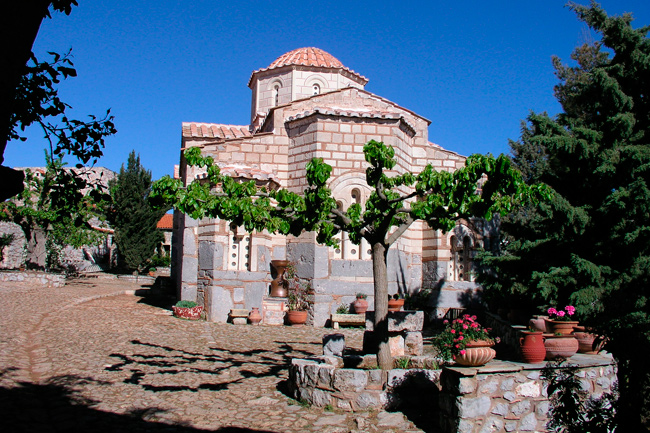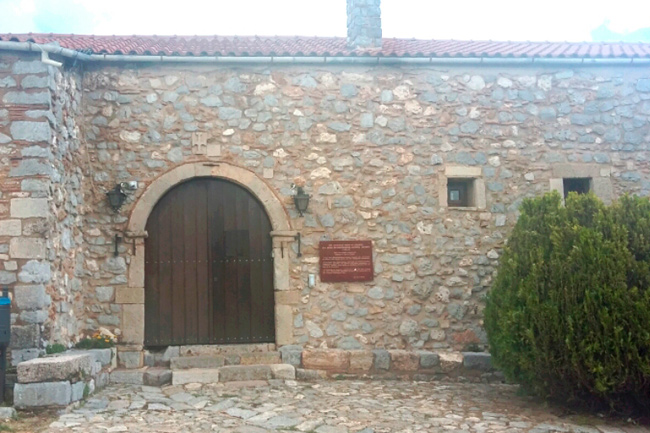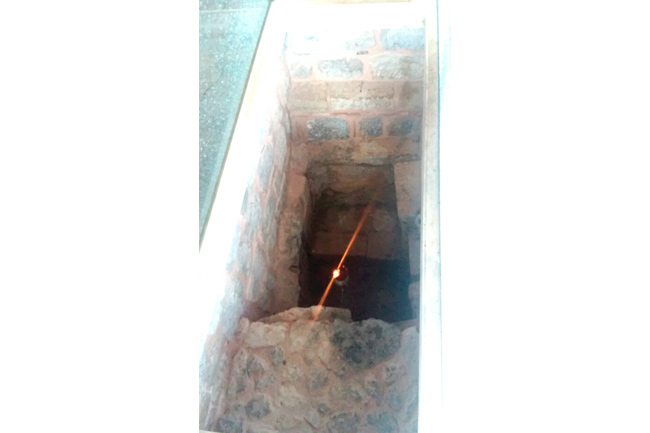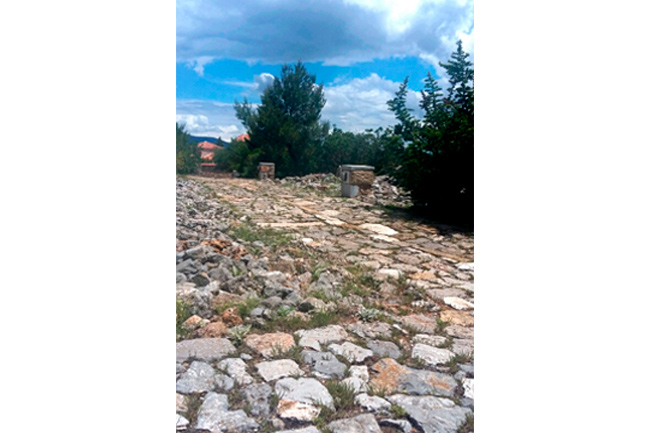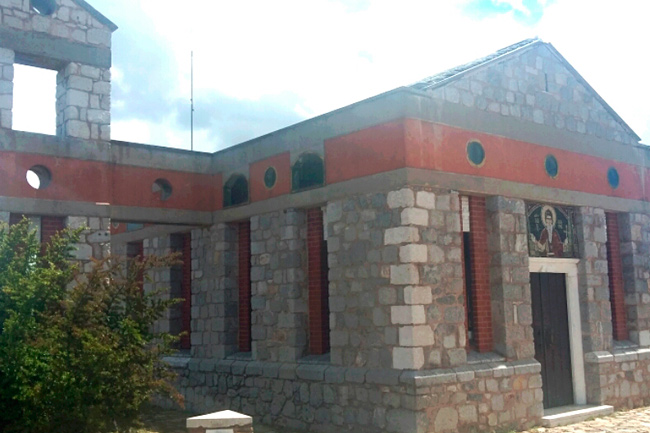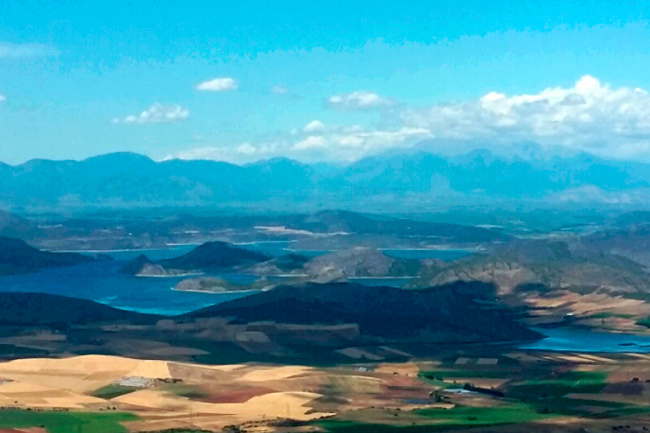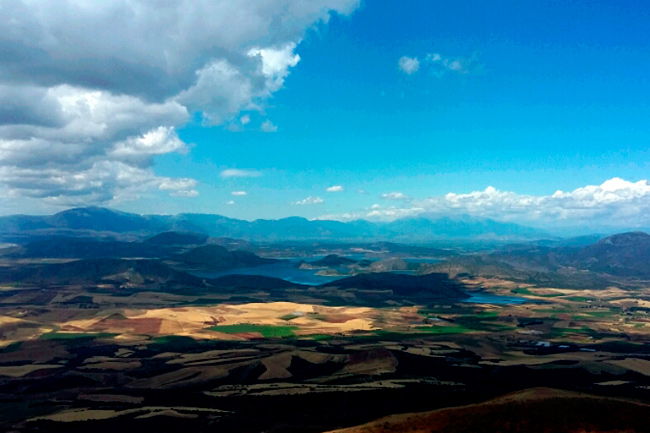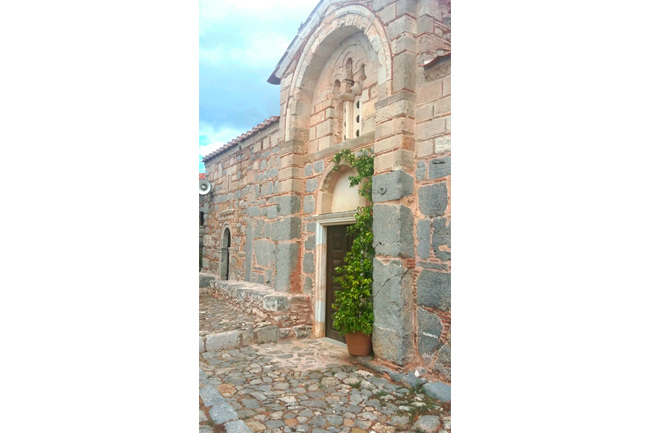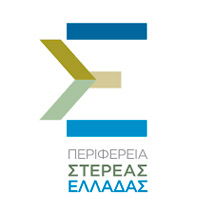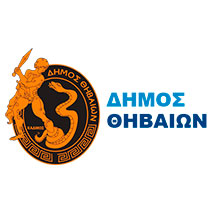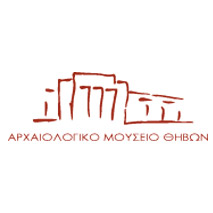Travelers will enjoy a beautiful tour with Thiva as their base, and Ypato and the famous Monastery Sagmata as their destination. Ypato is a beautiful, picturesque village east of Thebes, on the slopes of the homonymous mountain (Mount Ypatio) that is ideal for nature walks. In the village visitors can find taverns with excellent meat delicacies.
At a distance of about three kilometres from the village there is the Monastery of the Transfiguration of Saviour, Sagmata, built on the edge of an impressive cliff formed on the slopes of Mount Ypatio.
Holy Monastery Sagmata
HOLY MONASTERY OF THE TRANSFIGURATION OF THE SAVIOUR – SAGMATA
The historic Monastery of the Transfiguration of the Saviour – Sagmata, one of the oldest monasteries in Greece, is built at an altitude of 747 metres at the top of Mount Sagmata. It is about half an hour away from Thiva and 8km from the National Road Athens – Lamia (80th km)
ESTABLISHMENT OF THE MONASTERY
According to Pausanias, in ancient times the mountain was called “Ypation Oros” and on its top there was a magnificent ancient Greek temple and a statue of Zeus Hypatos. In the Byzantine period and especially in the 12th century began the construction of the Holy Monastery. Its ktetor was Saint Clement and it was funded by the Emperor Alexios Komninos, who granted special privileges to the monastery with a golden bull in 1106, as well as rich gifts. During this period the name of the mountain was changed from ‘Ypation’ to ‘Sagmation’, probably because the mountain resembles a sagma(=saddle) or because the old monks practised the art and work of the saddlemaker.
150m south of the monastery is the picturesque chapel of Saint Nikolaos, most likely built in the 16th century. To the west there is the newly built chapel of Saint Clement with his tomb. From this point the view of the Boeotian plain and the lakes is magnificent. A small path starts from here and leads to the steep cave where Saint Clement exercised. Around the monastery there are ruins of older chapels, while about a kilometre away, on the road, is the chapel of the Holy Forty Martyrs, a building dating back to the Ottoman era.
THE CHAPEL OF SAINT LUKE
Recently, the contemporary Russian Saint Luke the Blessed Surgeon, Archbishop of Simferopol and Crimea (1877-1961), has become very well known in Greece. Inside the Monastery there is a chapel of Saint Luke. His memory is celebrated on June 11.
THE SAINTS OF THE MONASTERY
Saint Meletios (1035-1105). Ktetor of the homonymous Holy Monastery in Kithairon. He served as an elder of Saint Clement. Many claim that for some time he lived in Sagmatas. His memory is celebrated on September 1.
Saint Clement (1050-1140). Ktetor of the Holy Monastery Sagmata An Athenian by origin, he joined the Monastery of Saint Meletius at a young age, and he became a monk of Saint Meletius himself, staying there for 30 years. At the beginning of the 12th century he came to Sagmataand practiced “alone with God” in a cave on the edge of the steep cliff. In his days begun the monastery construction. His memory is celebrated on January 26 and May 1.
Saint Germanus (1480-1540). He served as an abbot of the monastery during the dark times of slavery. He was the spiritual father of Saint Seraphim. His memory is celebrated on January 26.
Saint Seraphim (1520-1602). He came from Zeli village. At a young age he came to Sagmata and lived there for 10 years. To further exercise he fled to the location Domvou Helicon and built there the Holy Monastery of the same name. His memory is celebrated on May 6.
THE HOLY MONASTERY IN RECENT YEARS
The monastery experienced days of great spiritual prosperity and was the spiritual beacon of the region for many centuries. Unfortunately, the national struggles of modern times did not leave the monastery untouched. The Bavarianoccupation halted the course of the monastery, as was the case for most monasteries. Then the monastery was plundered and stripped of its Holy Treasures and its bad luck further continued by modern-day sacrilegious people. The buildings suffered considerable damage from the ravages of time and because it was shorthanded. The once croweded monastery was left with few and elderly monks, who, without having necessary resources and living under adverse conditions, tried to salvage whatever they could. Since the 1970s, with the care of eminent Bishops Nicodemus and Jerome, serious restoration works began. The renovation has progressed quite a bit and the appearance of the dilapidated monastery has changed. Since 1977, a few monks have settled in the monastery and it now functions as a men’s commune.
